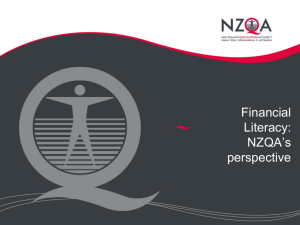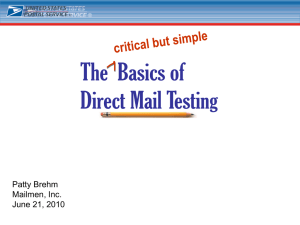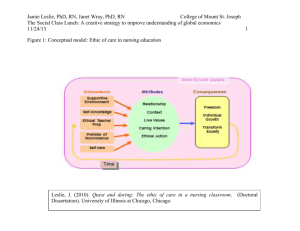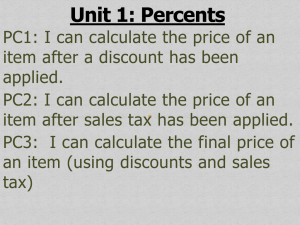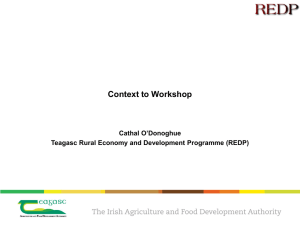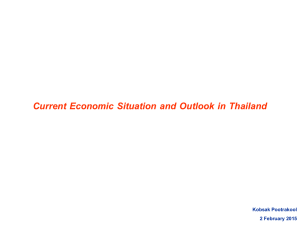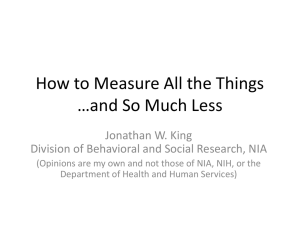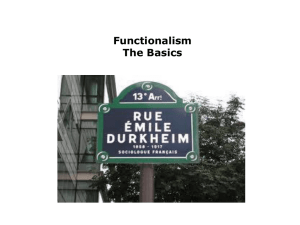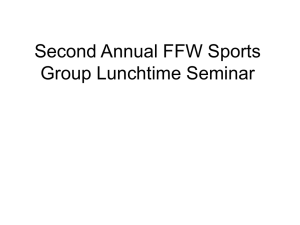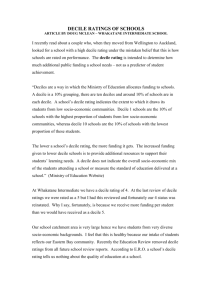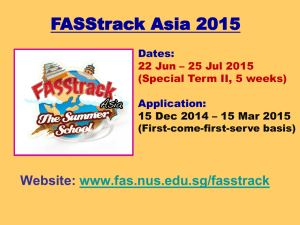Slides - NUS Connect
advertisement
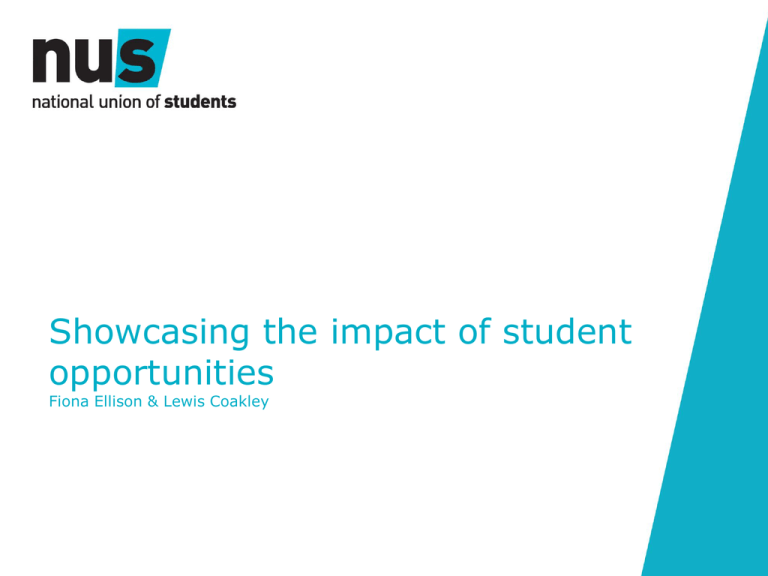
Showcasing the impact of student opportunities Fiona Ellison & Lewis Coakley Learning objectives Learning objectives • Learn more about the usage of impact reporting on showcasing value of activities • Gain an understanding of research and data analysis that NUS has developed around student opportunities • Know where to gain additional sources of information to showcase the value of student opportunities • Feel confident in implementing impact measurement programme What is impact? What is impact? Impact’ can be explained as the measurable changes resulting from activity. Why is it important to understand impact? • Funding • Recruitment • Trends • Evaluation What is already out there? Variety of sources: • NUS Surveys • Youth sector * NCVYS Youth Report * vInspired * Cabinet Office Community Life Survey • Education sector * BUCS value of sport * HEFCE – Student retention How do you use data to show impact? Proviso: • Correlation and causation • Accuracy and Input Links Membership Intelligence Data Sets Drop Out Polling… we asked “What are the Biggest Issues Facing Students Nowadays? Time pressure Transport and Work Load 1% 4% Social Pressure 1% Other 3% Mental Health 1% Housing and Accommodation 1% Cultural or Language Barriers 1% Visa Restrictions 0% Academic pressure 5% Employment 8% Crime and security 0% Cost of Tuition and Student Loans 13% Cost of Living 62% Mean block grant as a proportion of the institution’s income sorted by mission group Union mean block grant as a proportion of institutions total net income % Ranking of institution’s total net income (highest to lowest) Russell 0.384 6 1994 group 0.415 4 Million + 0.506 2 Alliance 0.499 3 Guild HE 0.565 1 Unaligned 0.409 5 Mean block grant and block grant per full-time equivalent student numbers by mission group This years’ mean block grant (£) Mean block grant per full-time equivalent (£) 1,704,309 73 1994 group 790,500 66 Million + 658,779 42 Alliance 841,000 47 Guild HE 221,000 45 Unaligned 492,000 51 Russell Total mean expenditure on clubs and societies by mission group Total mean spend on clubs and societies (£) Russell 154,000 1994 group 26,718 Million + 34,274 Alliance 30,296 Guild HE 19,501 Unaligned 27,063 Clubs and Societies versus NSS Q23 Total spend clubs and societies (£) Total number of C&S Spend per C&S (£) Q23 (TD) 66,500 128 520 Q23 (BD) 6,401 69 93 Variance 60,099 59 427 Block grant, drop-out and student engagement Top decile for drop-out Bottom decile for drop out Mean number of students’ union staff 12 46 Mean staff costs as a % of expenditure 98.6 81.1 Block grant, drop-out and student engagement (2) Top decile for drop-out Bottom decile for drop out Mean Block Grant £589,359 £1,525,386 Mean number of clubs and societies 75 215 Mean expenditure on clubs and societies (£) 23,554 132,277 Clubs and Socs top decile Mean % of students registered as sports club members Mean % of students registered as societies members Mean number of students involved with RAG Mean number of community projects operating Mean number of students involved in community projects Mean election turnout % Top decile for drop-out Bottom decile for drop out Variance 3 20.2 17.2 5.2 38.2 33 20 1,443 1423 2 60 58 66 902 836 12.6 26.4 13.8 Link between Q22 and Other NSS Questions Q6: Assessment and marking arrangements have been fair; Q10: I have received sufficient advice and support with my studies; Q4: The course is intellectually stimulating; Q14: Any changes to the course have been communicated effectively; Q11: I have been able to contact staff when I needed to; Q3: Staff are enthusiastic about what they are teaching; Q13: The timetable works efficiently as far as my activities are concerned; and Q1: Staff are good at explaining things. Measuring your impact Measuring your impact Mechanisms for data capture? • Survey(s) • Focus groups • Interviews • Photographs • CRM system • NUS digital • Social media • Polls Impact Measurement - NEF Background Based on SROI – Social Return on Investment The method based on three fundamental features: 1. Stakeholders are central 2. Theory of change – Know how your work creates impact 3. Transparency – the process is open to scrutiny Stage process Stage 1: Define the scope Stage 2: Understand what changes Stage 3: Measure the change Stage 4: Determine attribution Stage 5: Analyse findings – report and embed learning Using your impact information How to use impact measurement Showcasing impact is about: • Having good data and information • Communicating it in the best way possible Ensure that you: • Embed a culture of communicating impact • Make it regular • Make it meaningful and relevant How to showcase impact • • • • • • • • Impact reports Physical displays Officer reports Press releases Blogs Videos Social media SU website Ultimate aim to make your impact clear Questions? What next? Get in touch: fiona.ellison@nus.org.uk - @Fiona_Ellison lewis.coakley@nus.org.uk - @LewisCoakley Sign up to the next webinar – “Bringing your club and society elections to life” 20th Feb Explore the student opportuniteis resource hub: studentopportunities.nus.org.uk

